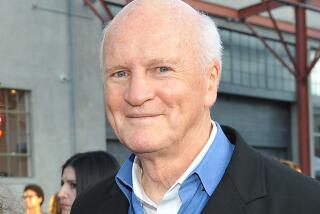Indicted Museum Official Defends Transactions : Art: Southwest’s former director admits taking works, but says he traded them to benefit the collection, not himself.
- Share via
Patrick T. Houlihan, who was indicted earlier this week for the theft of artworks from the Southwest Museum in Los Angeles, said Thursday that he did take about 90 pieces from the collection and put them up for sale or trade.
Houlihan said this was a legitimate part of his job as director of the museum--a post he held from 1981 until 1987--and that he received no personal monetary gain from the transactions.
“I categorically deny that any of the money or objects went to me,” said Houlihan, who was interviewed by telephone from his office at the Millicent Rogers Museum in Taos, N.M., where he is executive director.
Sources close to the investigation say the indictment, which will be unsealed after Houlihan is arraigned in Los Angeles today, charges that he overstepped his bounds in taking the objects out of the collection and that he kept at least some of the funds.
The charges are the result of a three-year investigation by the FBI into about 120 items--worth an estimated $3 million--found missing during museum audits in 1989 and 1990.
Houlihan said he had no knowledge of approximately 30 missing items on the list that he did not sell or trade.
“I did absolutely nothing wrong,” said Houlihan, who plans to plead innocent to all charges. “Everything I did was above board and in accord with policies at the museum.”
He said that when he became director of the Southwest Museum, which is nationally known for its 200,000-item collection of American Indian art and artifacts, the standing policy was that the director had the discretion to put articles up for sale or trade as he saw fit.
“The board at the museum did not approve the transactions, nor did they not approve them,” he said. “It was policy that I had the right to do it and I was not told otherwise.”
Jerome Selmer, current executive director of the Southwest Museum, said policy now calls for any sales or trades to be approved not only by the board but also by the museum’s professional staff. He said he was not sure what the policy was during Houlihan’s tenure. “But as far as I know, that policy has been in effect for some time,” Selmer said.
Houlihan said the trades were done, in part, to increase the museum’s holdings of Indian art from the Northwest United States. He furnished The Times with a statement his lawyer obtained in 1990 from an Arizona-based Indian art dealer, Richard Cleland, saying that Houlihan traded a painting by famed Western artist Maynard Dixon for five Northwest objects, including a mask, a speaker’s staff and amulets.
Cleland has since died.
The painting, like many other Southwest Museum objects Houlihan sold or traded, ended up on the open market. Entitled “Ieska Wakan,” it appeared on the cover of the now-defunct Western Airlines in-flight magazine as an example of Dixon’s Western art.
The FBI would not comment on how many items had been recovered. Selmer said none of the works have been returned to the museum.
Houlihan said the cash transactions went toward museum improvements, including the establishment of a new exhibit hall.
Taking an object from an art collection for sale or trade is known as de-accessioning and is one of the most controversial aspects of museum policy. But letting a museum director trade or sell an object without the approval of the board of trustees is highly unusual, according to museum officials.
Locally, the boards have the ultimate approval over the process at the Los Angeles County Museum of Art, the Museum of Contemporary Art and the J. Paul Getty Museum.
Giving one person that power goes against guidelines set by the Assn. of Art Museum Directors, a New York-based advisory body that oversees professional museum policies. The association states in its manual that “final action should rest with the board” in these matters.
Houlihan is widely credited with modernizing the Southwest Museum--which opened to the public in 1907--and making its displays more accessible.
He quit the museum in 1987 in protest of a move by several board members to merge with the Los Angeles County Museum of Natural History. The merger later fell through.
More to Read
The biggest entertainment stories
Get our big stories about Hollywood, film, television, music, arts, culture and more right in your inbox as soon as they publish.
You may occasionally receive promotional content from the Los Angeles Times.











